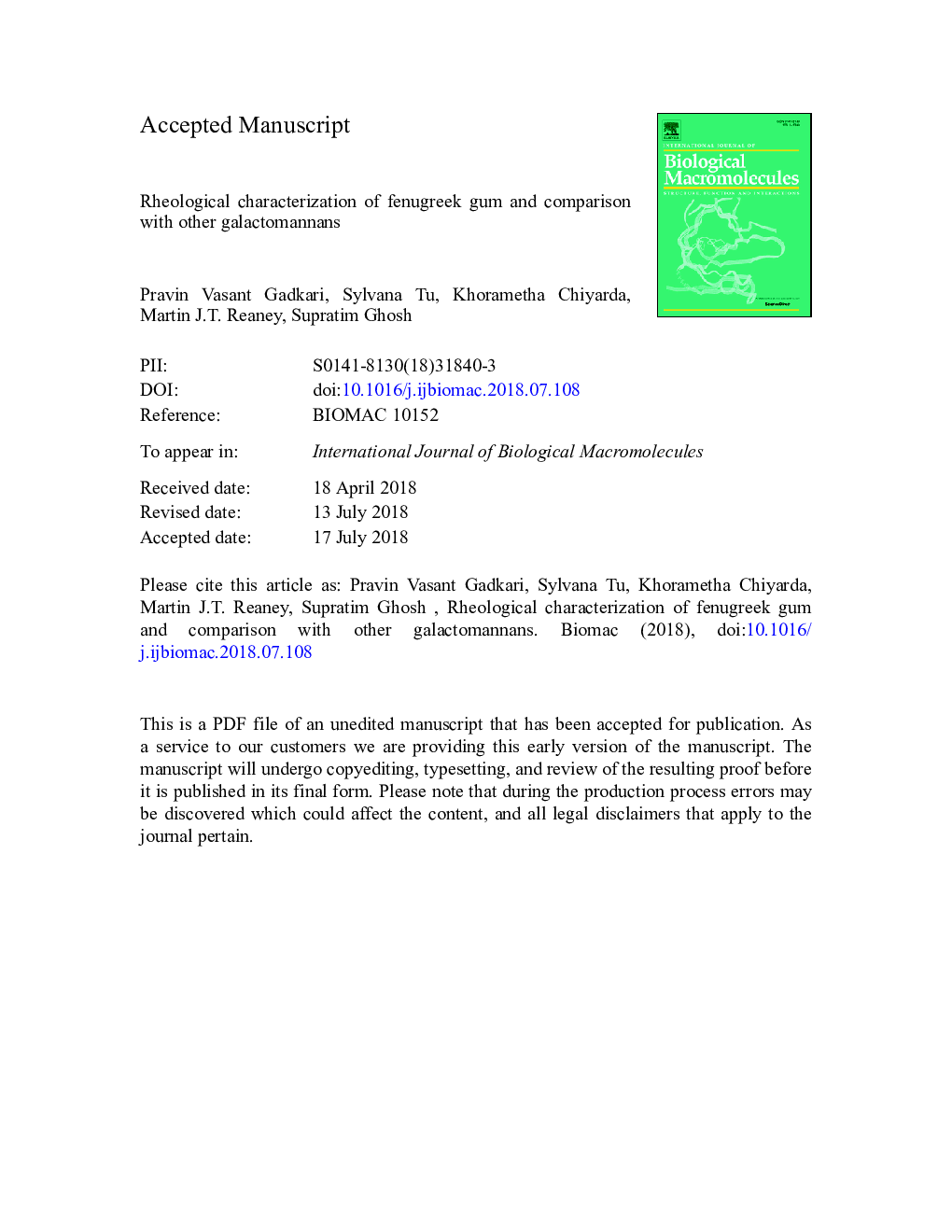| Article ID | Journal | Published Year | Pages | File Type |
|---|---|---|---|---|
| 8326758 | International Journal of Biological Macromolecules | 2018 | 42 Pages |
Abstract
Fenugreek gum (FG), guar gum (GG), and locust bean gum (LBG) dispersions were studied for their flow behaviour, intrinsic viscosity, viscoelasticity and the effect of environmental stress on their physicochemical properties. Shear thinning behaviour was observed in all three gum dispersions prepared at concentrationsâ¯>â¯0.25â¯wt%. The impact of the change in concentration (0.125 to 2â¯wt%) on dispersion flow behaviour and consistency coefficient were determined using power law model. Both GG and LBG dispersions have a higher intrinsic viscosities (16.93â¯Â±â¯0.02â¯dL/g and 15.20â¯Â±â¯0.02â¯dL/g) compared to FG (13.46â¯Â±â¯0.02â¯dL/g), but FG has higher average viscosity molecular weight (3.10â¯Â±â¯0.01) compared to GG and LBG. This could impart higher apparent viscosity to FG dispersions compared to GG and LBG. All gum dispersions above 0.1â¯wt% concentration showed entanglement among the polymer chains. Variation in pH (3-7) did not significantly affect viscosity of the dispersions while it was significantly decreased with the addition of salt. The FG had superior gelling properties compared to GG, and LBG at 1â¯wt% concentration which could have potential application in certain food and non-food products.
Related Topics
Life Sciences
Biochemistry, Genetics and Molecular Biology
Biochemistry
Authors
Pravin Vasant Gadkari, Sylvana Tu, Khorametha Chiyarda, Martin J.T. Reaney, Supratim Ghosh,
